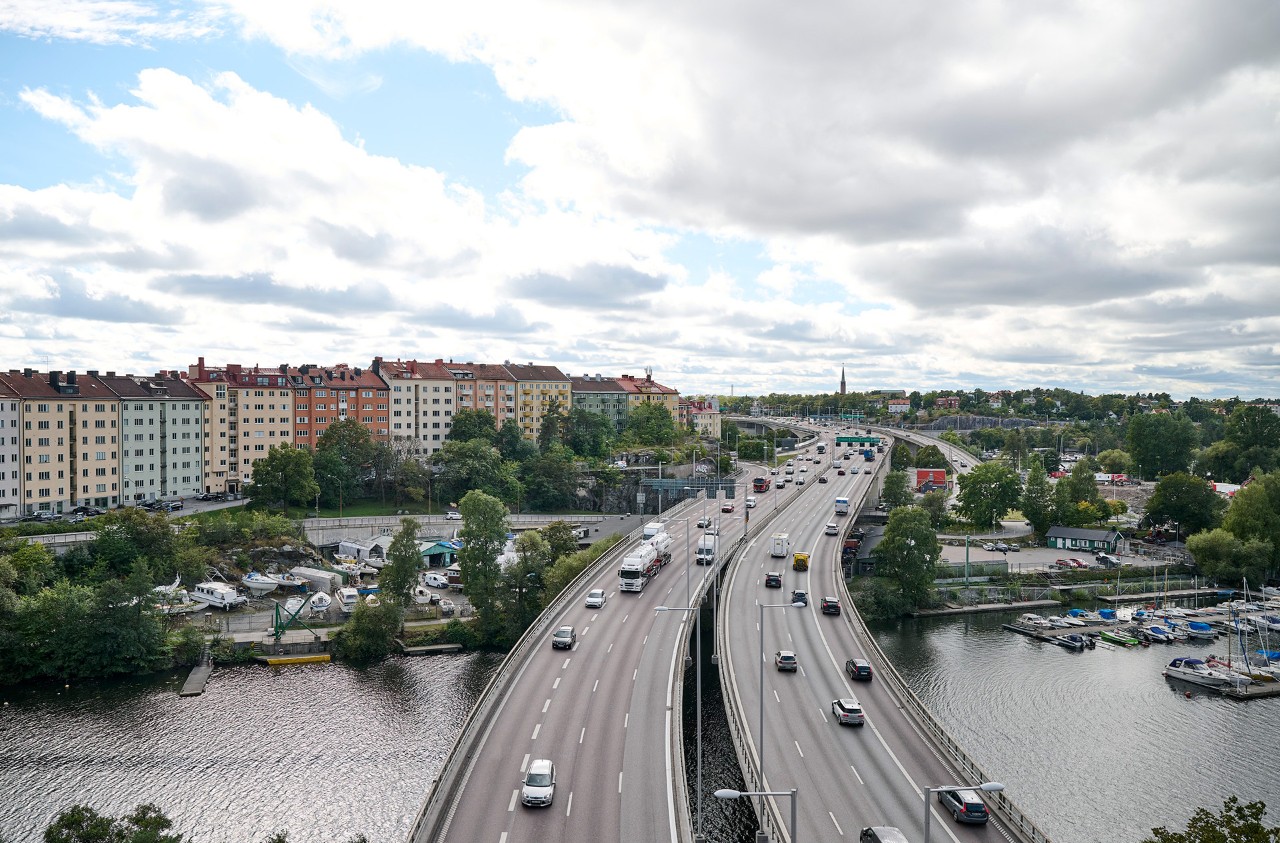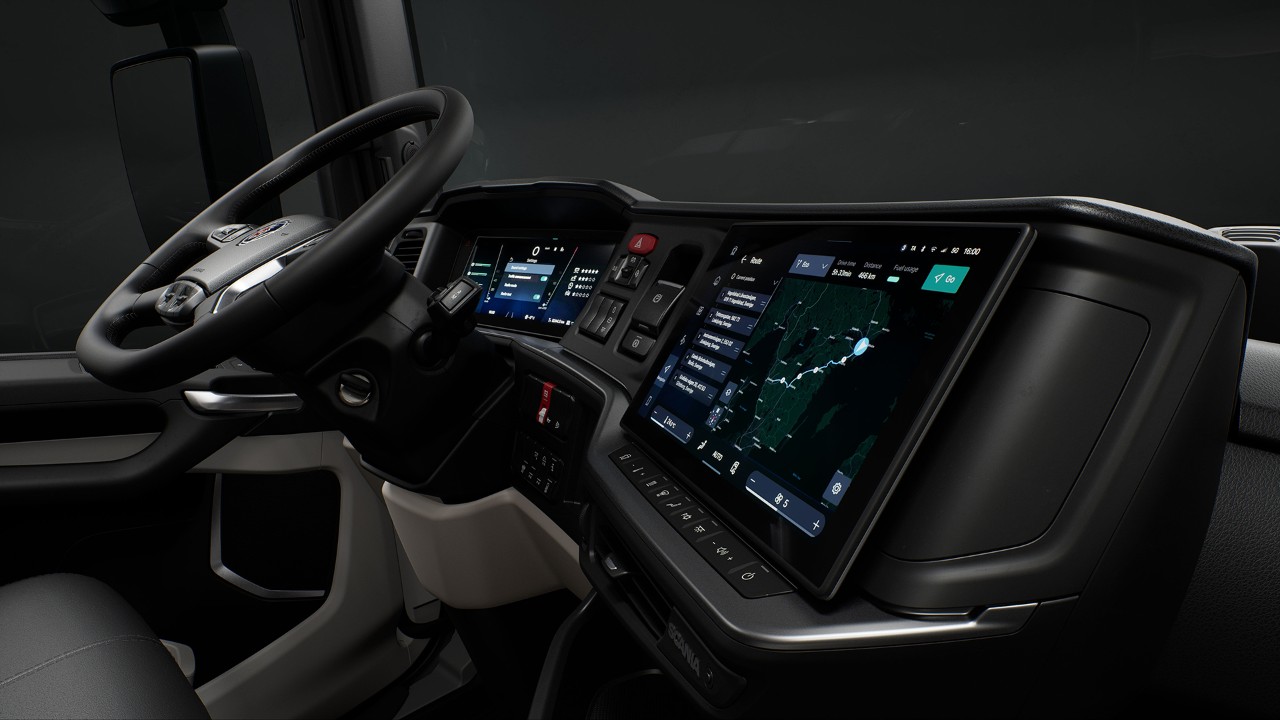
How will the new EU General Safety Regulation affect your vehicles and business?
Here is our guide to all you need to know about the requirements of the new GSR legislation, and why Scania already has a ‘smart and safe’ commitment to vehicle, driver, and customer safety.
From July 2024, all vehicle registrations in the European Union must comply with the new EU road safety directive, the General Safety Regulation (GSR).
The GSR is part of the EU’s ‘Vision Zero’ initiative, which targets zero fatalities and serious injuries on Europe’s roads by 2050. It also establishes the legal framework for the approval of automated, fully driverless vehicles in the EU zone, and harmonises with directives from the United Nations Economic Commission for Europe.
Under the new regulation, which came into effect in July 2022, every truck and bus that is registered in Europe by vehicle manufacturers from July 2024 onwards must include eight specific automatic driver assistance safety features.
All new Scania trucks and buses sold from that date will be totally compliant, and in fact most of the required safety assistance technology is already well established in our vehicles today. The EU law also creates provision for three further mandatory safety functions, which must be installed in 2026 and 2029.
Later in this article you will find the list of the first eight features, and information about Scania’s longstanding commitment to smart and safe technology.
Why is the GSR needed?
The GSR is the European Union’s response to both safety issues and to the advent of digital technology for manual and autonomous vehicles.
The safety issue is paramount because in 2021 there were almost 20,000 fatal road accidents in the EU zone. Heavy vehicles were involved in around 14% of those accidents - an overrepresentation in relation to their proportion of the total road traffic.
Up to 90% of all accidents involved human error. The most common accidents are:
- Rear-end collisions between cars and commercial vehicles.
- Collisions between a truck that is turning right and a cyclist that is travelling alongside but who intends to go straight ahead.
- Collisions with a pedestrian or pedestrians crossing the road in front of the vehicle.
All of this, plus the complexities of modern traffic, mean drivers need automated technological help to keep them, other road users and pedestrians safe.
Beyond the most important human aspects, an accident can also have a significant economic effect on a transport business’ total operating economy. If a vehicle is taken out of commission for repairs that can take several days or weeks it means expensive downtime, while there is also the insurance cost stemming from the claims relating to the accident itself.
The capabilities made possible by digitalisation have already seen several truck and bus manufacturers, including Scania, introduce advanced driver assistance systems (ADAS) to give drivers more help on the increasingly busy city streets and highways around the globe. The same technology is also central to autonomous vehicles. The GSR will help to regulate those systems so that a standard suite of safety measures is in place.
The eight mandatory safety feature requirements
1. Emergency stop signal: A flashing light that indicates to other road users behind the vehicle that the vehicle is suddenly slowing down or braking heavily.
2. Tyre pressure monitoring system: A system that constantly monitors all the tyres’ pressures as the vehicle is in use and warns the driver when a tyre is under or over-inflated.
3. Blind spot information system: This warns the driver of a possible collision with pedestrians and/or bicycles beside the vehicle. It’s active at low speed.
4. Reversing information system: Camera and/or sensor technology that shows the driver if there are objects or people behind the vehicle when they are reversing.
5. Moving off information system: Warns the driver of a potential collision with pedestrians and cyclists that are in the proximity of forward blind spot of the vehicle.
6. Alcohol Interlock Facilitation Installation: A standardised interface that allows the fitting of the various aftermarket alcolock devices, preventing drivers who are over the drink-driving limit from driving their vehicle.
7. Driver drowsiness and inattention warning: Warns the driver if the system assesses that they are not as alert and may be tiring.
8. Intelligent speed assistance: Warns the driver from exceeding the speed limit by using cameras and GPS-linked map databases.
‘Smart and safe’ Scania
Scania already has most of the eight mandatory safety features available, as part of its purpose of driving the shift towards a sustainable transport system, in which smart and safe transport is a key pillar. Three of the product management team working on this project explain more:
“Three of the existing functions we offer have been enhanced by the new digital ecosystem,” says Product Manager Cristina Banzi. She adds that work is well under way to ensure that the remaining three features will be ready for the GSR taking effect.
They simply must be. As Product Manager Kushink Bazaz points out, “We need to comply with the full list of requirements, but we are not stopping there. We’re also working on other technologies that would put us ahead of the game because, although they’re not yet required by law, we would be able to offer them to our customers.”
There are two other aspects to Scania’s work on safety features that also intersect with the GSR. The first is cybersecurity. A separate EU law requires that all the electronic architecture in our vehicles needs to be protected from cyber attacks and computer viruses, in operation and in software updates.
Scania already has a strong cybersecurity infrastructure in its processes and products. It is also boosting this through cybersecurity awareness training throughout the organisation, which in turn will help to keep improving product and service security.
The second is the actual accessibility of the various assistance functions. With the soon-to-be introduced Smart Dash technology, Scania is creating a digital dashboard for its vehicles that allows a driver to safely navigate and manage the various safety and other electronic features on board easily and safely.
It’s all part of Scania’s ever-increasing focus on safe and smart solutions.
“Smart Dash is based on our new modular electronics architecture that fulfils cybersecurity to an even higher level, and complies with the GSR,” says Eduardo Landeo, another Product Manager working on the project.
“But the main motivation for us in installing this digital technology is that aligns with our aim of leading in safe transport.
“We recognise that the transport industry has been part of the problem when you consider the road traffic statistics, but we have been working hard to be part of the solution, too. We will ensure that the nervous system, the vehicle intelligence, is smart and safe in traffic.”
Explore Scania’s journey to smart and safe vehicles
Read more about what´s coming and what features we have today.
